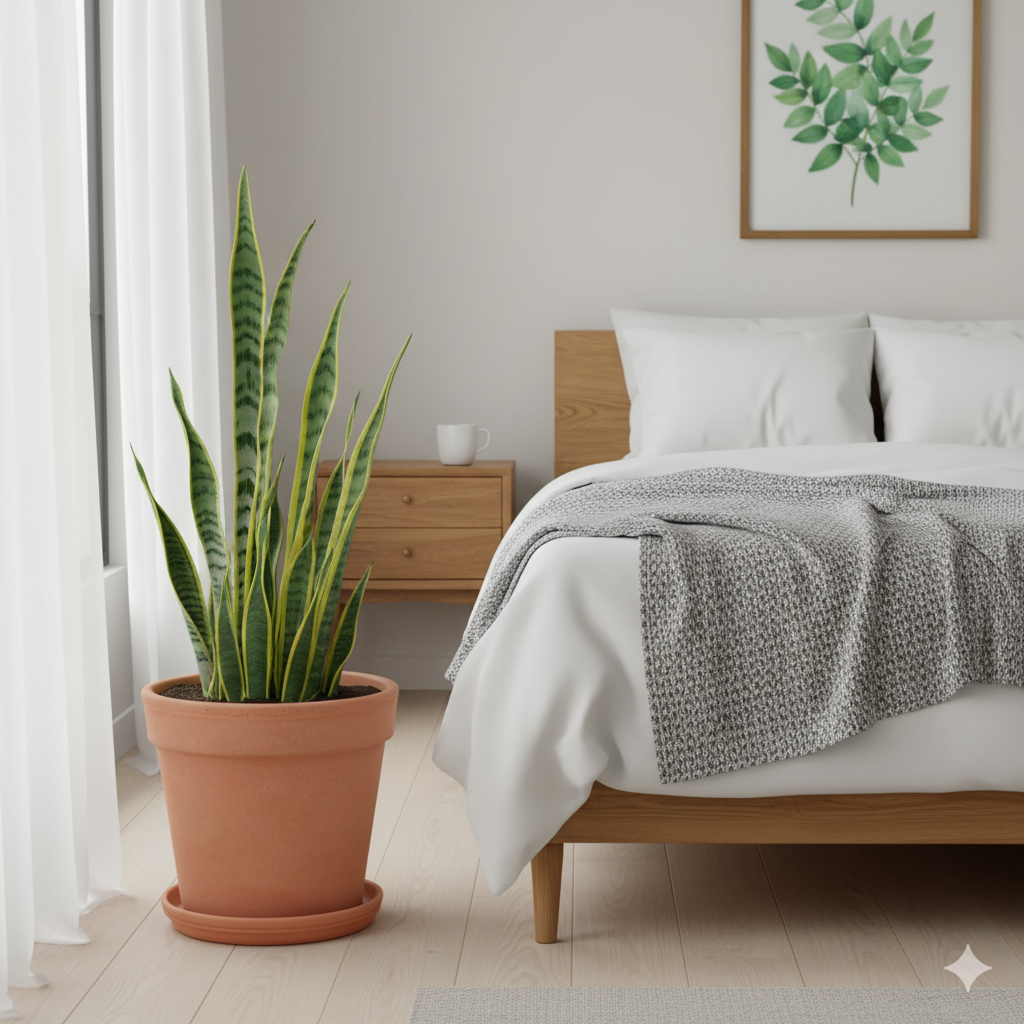Introduction to the Snake Plant
The snake plant, scientifically known as Sansevieria and commonly referred to as mother-in-law’s tongue, is a popular ornamental plant renowned for its striking appearance and remarkable adaptability. Native to West Africa, this hardy succulent has gained significant popularity in indoor gardening due to its resilience and low maintenance requirements. Its long, upright leaves exhibit a unique pattern of green and yellow edges, adding a touch of elegance to any room.
One of the most appealing characteristics of the snake plant is its ability to thrive in varying light conditions, ranging from low light to bright indirect sunlight. This feature makes it an ideal choice for bedrooms, where natural light may be limited. Furthermore, the snake plant does not require frequent watering, as it stores moisture in its thick leaves. This adaptability significantly reduces the chance of overwatering, which can be detrimental to many houseplants.
The aesthetic charm of the snake plant extends beyond its physical attributes. Its architectural form and color variations allow it to complement various interior design styles, from minimalist to bohemian. As a result, many individuals choose the snake plant not only for its air-purifying qualities but also as a decorative element that enhances their home environment.
Moreover, the snake plant is celebrated for its resilience, making it an excellent option for beginner plant enthusiasts as well as seasoned botanists. Its tolerance for neglect, paired with a commanding presence, positions the snake plant as a favorite among houseplant collectors and casual owners alike, particularly in the intimate setting of a bedroom. As we delve deeper into the benefits this plant offers, its reputation as a multifaceted indoor plant becomes increasingly evident.
Understanding Air Quality and Its Importance
Air quality refers to the condition of the air within and around us, influencing our health and comfort. It is determined by the presence of various pollutants and the balance of oxygen and other gases. Within indoor environments, such as bedrooms, air quality is especially critical because we typically spend a significant portion of our time indoors. Factors such as ventilation, humidity, and the materials of construction play a vital role in determining the levels of indoor air pollution.
Common indoor pollutants include volatile organic compounds (VOCs), particulate matter, mold spores, and carbon dioxide. These pollutants can emanate from various sources, including furniture, cleaning agents, and even everyday activities such as cooking. Elevated levels of these substances can lead to a range of health issues. Short-term exposure to poor air quality may cause headaches, fatigue, or irritation of the eyes and throat, while prolonged exposure can result in more serious conditions such as respiratory diseases, allergies, and even cardiovascular problems.
Improving air quality is particularly important for enhancing sleep quality and overall well-being. Good air quality in the bedroom can promote better sleep by reducing the likelihood of disturbances caused by allergens or pollutants. Moreover, cleaner air has been linked to increased levels of relaxation and healing, vital for individuals recovering from illness and for those aiming to maintain a healthy lifestyle. When considering the incorporation of plants like the snake plant in the bedroom, it is essential to recognize their potential benefits. These plants not only enhance aesthetic appeal but can also contribute to improved air quality. Thus, addressing air quality issues is crucial for promoting a healthy living environment, especially in spaces dedicated to rest and rejuvenation.
Scientific Evidence on Snake Plant and Air Quality
The snake plant, also known as Sansevieria or mother-in-law’s tongue, has gained attention for its purported ability to enhance indoor air quality. Research into this quality began gaining prominence following NASA’s Clean Air Study, which aimed to identify plants capable of removing toxic agents from the air in closed environments. This study highlighted several species of indoor plants, with the snake plant being operationally significant for its compatibility with low light and minimal maintenance requirements.
NASA’s findings suggested that the snake plant can absorb various volatile organic compounds (VOCs), which include harmful pollutants such as formaldehyde, benzene, and xylene. These VOCs can originate from everyday household products, contributing to what is commonly known as “sick building syndrome.” It was concluded that snake plants, along with other species, could contribute to a noticeable reduction in indoor air pollutants over time.
Follow-up studies have sought to evaluate the specific pathways through which snake plants purify air. For instance, the plant utilizes a unique form of photosynthesis called crassulacean acid metabolism (CAM). This allows the snake plant to convert CO2 into oxygen during the night, contrasting with most plants that perform this process during the day. This adaptability not only contributes to improved oxygen levels but may also aid in mitigating the accumulation of indoor pollutants.
However, while the studies present compelling evidence, it is vital to critically evaluate the scale and conditions of these findings. The actual reduction of pollutants in typical indoor settings may vary significantly dependent on factors such as the number of plants present and the specific indoor environment. Therefore, while the snake plant has demonstrated potential capabilities to improve air quality, the extent of its effectiveness remains an open field for further scientific investigation.
Practical Tips for Incorporating Snake Plants in Your Bedroom
Incorporating snake plants into your bedroom can be a rewarding endeavor, both for aesthetics and for potential air quality improvements. First and foremost, selecting the right placement for your snake plant is crucial. Ideally, these hardy plants thrive in indirect sunlight, making a spot near a window with filtered light an excellent choice. However, they can also adapt to low light conditions, which allows for flexibility in placement. Positioning your snake plant on a nightstand or bookshelf not only enhances visual appeal but also contributes to air quality benefits while you rest.
Care instructions for snake plants are relatively straightforward. This plant prefers dry soil, so watering should occur only when the top inch of soil feels dry to the touch. Overwatering is one of the most common issues, which can lead to root rot. During the growing season, from spring to summer, you may consider fertilizing every few weeks with a general-purpose houseplant fertilizer to encourage healthy growth. Regularly dusting the leaves with a damp cloth can also improve the plant’s ability to absorb light and enhance its overall appearance.
For those looking to elevate the indoor aesthetic even further, consider combining snake plants with other houseplants that thrive in similar lighting and watering conditions. Plants such as pothos or ZZ plants can complement the sleek look of snake plants while creating a more vibrant environment. When choosing combinations, ensure they have similar care needs to simplify maintenance.
It’s worth noting some common misconceptions surrounding snake plants. While they are renowned for their air-purifying abilities, their effectiveness may vary based on the size of the plant and room. Moreover, beyond air quality, snake plants can also help reduce stress and improve overall well-being due to their vibrant presence.





